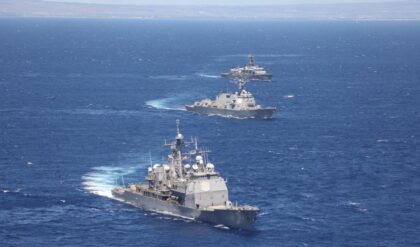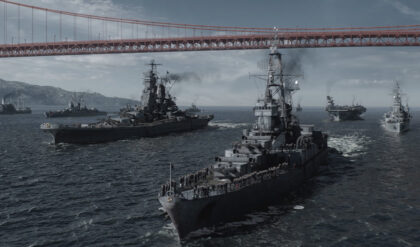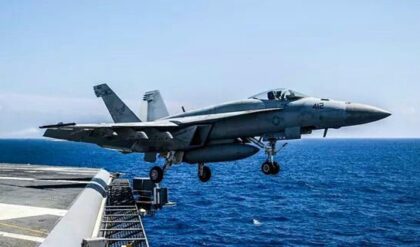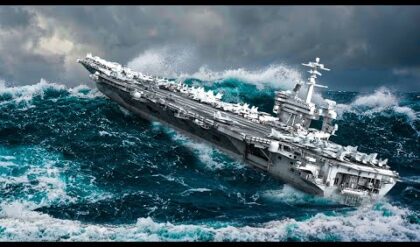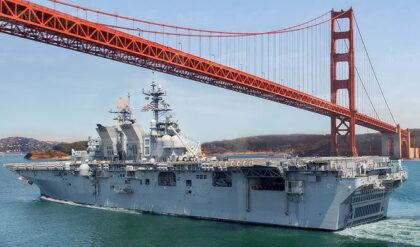The Russian navy has been actively researching and visiting World War Two shipwrecks. Reportedly, they have been removing military equipment from the salvaged wrecks.
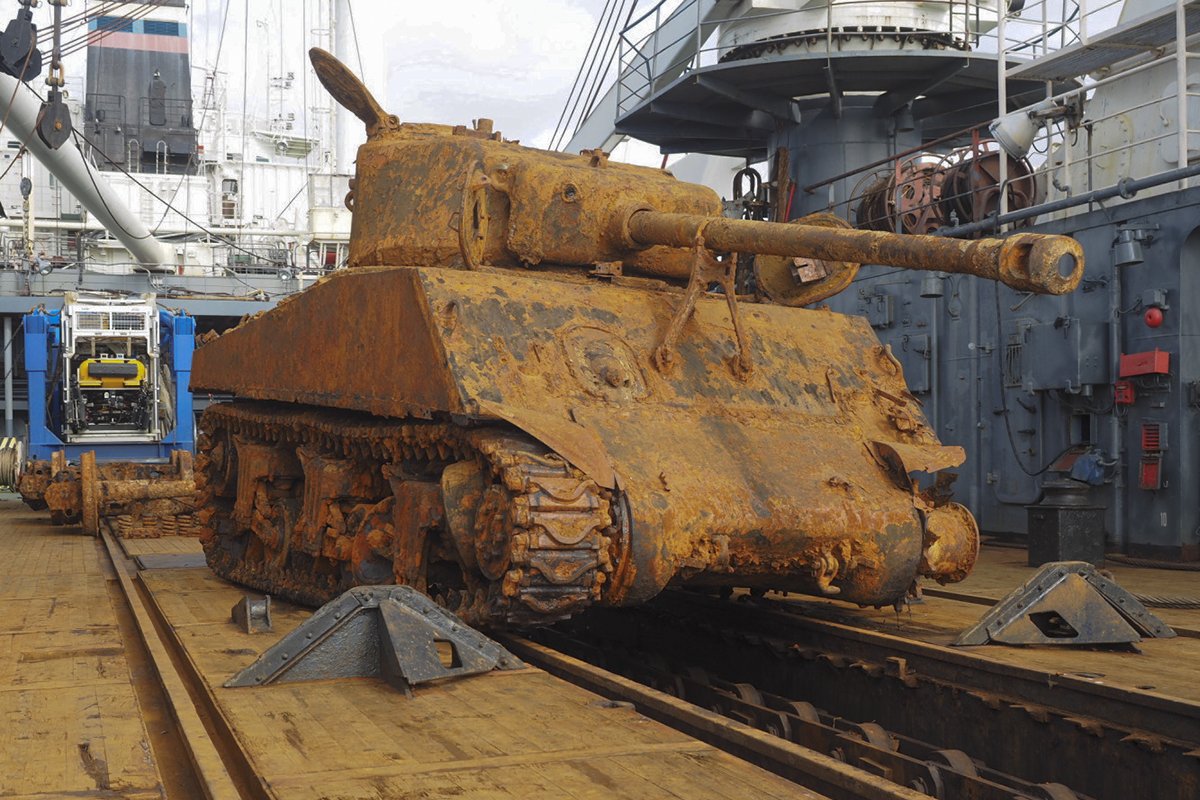
Many argue that it is a violation of international law. However, according to an analysis of satellite imagery, they are restoring the salvaged bounty.
And they have displayed it in military parades and museums!
 The Russians recover yet another Sherman tank from the wreck of the SS Thomas Donaldson in the Barents Sea
The Russians recover yet another Sherman tank from the wreck of the SS Thomas Donaldson in the Barents Sea
The Russian shipwreck haul included approximately 6 to 10 tanks. Two of them were taken from U.S. cargo ships, the SS Thomas Donaldson and the SS Ballot. Historically, Nazis had torpedoed and sunk these U.S. ships in Russia’s territorial waters at the bottom of the Barents Sea.
In addition to Sherman and M3 Lee tanks, Russia has taken away guns and an entire train using a powerful tool known as a grabber. The Maritime Observatory, a non-profit initiative, reported these findings. The Observatory uses satellite imagery, vessel-tracking signals, and AI to protect underwater cultural heritage.
Recent Developments
Giles Richardson, a Maritime Archaeology Sea Trust (MAST) Senior Archaeologist, reported Russia’s most recent salvage operation occurred in October 2022. Richardson, who runs the Maritime Observatory, noted that excavation operations came to a halt each year during the winter.
Following the past trend, Russia’s Northern Fleet is expected to return in the next few months. However, the Russian Ministry of Defence did not respond to a request for comment.
 The USS Thomas Donaldson was torpedoed during WWII. The Russians have raided the site.
The USS Thomas Donaldson was torpedoed during WWII. The Russians have raided the site.
According to a series of blog posts published by Russia’s Ministry of Defence, salvaging shipwrecks to this level requires the navy to train specialist divers. More importantly, though, it allows them to use and test equipment such as mini-submarines and uncrewed underwater vehicles.
Some may find it alarming that the same skills and equipment could be used to sabotage underwater infrastructure, including telecommunications cables and pipelines.
Richardson referenced the September 2022 incident where explosions damaged natural gas pipelines in the Baltic Sea. “The Northern Fleet’s tank salvage publicly demonstrates the equipment and expertise needed for a sabotage operation like Nord Stream,” said Richardson.
Many governments claimed that the September 2022 incident was a sabotage mission. However, no definite culprit has been named as of yet. Russia accused Western governments of involvement. U.S. officials dismissed the allegations.
The cat-and-mouse game continues.
Seabed Warfare
Independent defense analyst H.I. Sutton stated that the salvage operations could help train naval staff for “seabed warfare.”
Although their training is helpful in sabotaging underwater infrastructure, drawing a direct line to Nord Stream is virtually impossible.
According to Sutton, the main vessel involved in the 2022 salvage operation is Kil 143. In addition, a crane ship was used in the 2018 recovery of a nuclear-powered Burevestnik cruise missile. It is “one of Putin’s super weapons” that crashed into the sea in 2017.
International Maritime Law
Russians are carrying out salvage operations without the permission of the U.S. government, which still owns the shipwrecks.
Ian McConnaughey, the US Naval History and Heritage Command spokesman said doing so violates U.S. and international law, which requires authorization to excavate or break up state-owned shipwrecks.
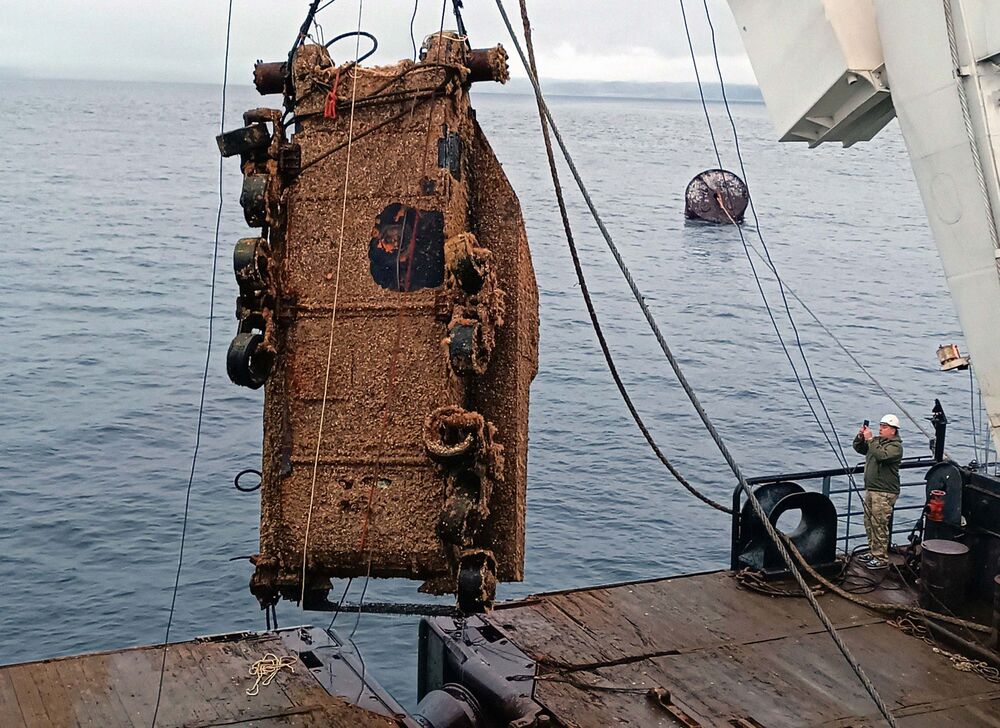 An American M3 Lee tank is lifted from the seabed. (Photo: Russian Northern Fleet/TASS/ZUMA Press)
An American M3 Lee tank is lifted from the seabed. (Photo: Russian Northern Fleet/TASS/ZUMA Press)
Furthermore, he cited the Sunken Military Craft Act, enacted by the U.S. in October 2004. He stated, “Its primary purpose is to preserve and protect from unauthorised disturbance all U.S. sunken military craft while also affording protections to foreign sunken military craft that lie within U.S. waters.”
When the law passed, the Russian government said: “All the sunken warships and government aircraft remain the property of their flag State.”
SS Thomas Donaldson and SS Ballot
Russians plucked equipment from two ships, SS Thomas Donaldson and SS Ballot. These ships were part of the Arctic Convoy between the U.K., the U.S., and the former Soviet Union in the early 1940s. The two travelled to deliver essential supplies to help the Soviets repel a Nazi invasion.
Historians say the ships were civilian vessels, not warships, engaged in military service. Therefore, the team at MAST thinks they should be treated as war graves and not pulled apart.
The incident of SS Ballot left 44 dead or missing. On the other hand, SS Thomas Donaldson left four dead. “These are shared heritage war graves. People died in the shared pursuit of defeating fascism,” says Richardson.
